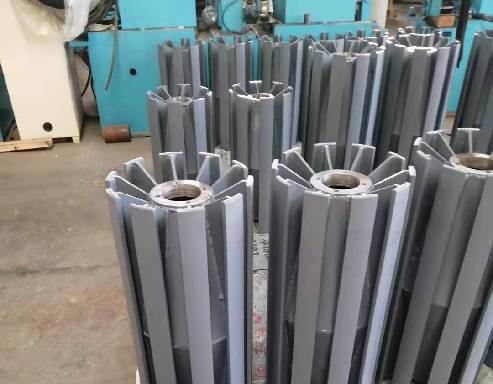 Afrikaans
Afrikaans  Albanian
Albanian  Amharic
Amharic  Arabic
Arabic  Armenian
Armenian  Azerbaijani
Azerbaijani  Basque
Basque  Belarusian
Belarusian  Bengali
Bengali  Bosnian
Bosnian  Bulgarian
Bulgarian  Catalan
Catalan  Cebuano
Cebuano  Corsican
Corsican  Croatian
Croatian  Czech
Czech  Danish
Danish  Dutch
Dutch  English
English  Esperanto
Esperanto  Estonian
Estonian  Finnish
Finnish  French
French  Frisian
Frisian  Galician
Galician  Georgian
Georgian  German
German  Greek
Greek  Gujarati
Gujarati  Haitian Creole
Haitian Creole  hausa
hausa  hawaiian
hawaiian  Hebrew
Hebrew  Hindi
Hindi  Miao
Miao  Hungarian
Hungarian  Icelandic
Icelandic  igbo
igbo  Indonesian
Indonesian  irish
irish  Italian
Italian  Japanese
Japanese  Javanese
Javanese  Kannada
Kannada  kazakh
kazakh  Khmer
Khmer  Rwandese
Rwandese  Korean
Korean  Kurdish
Kurdish  Kyrgyz
Kyrgyz  Lao
Lao  Latin
Latin  Latvian
Latvian  Lithuanian
Lithuanian  Luxembourgish
Luxembourgish  Macedonian
Macedonian  Malgashi
Malgashi  Malay
Malay  Malayalam
Malayalam  Maltese
Maltese  Maori
Maori  Marathi
Marathi  Mongolian
Mongolian  Myanmar
Myanmar  Nepali
Nepali  Norwegian
Norwegian  Norwegian
Norwegian  Occitan
Occitan  Pashto
Pashto  Persian
Persian  Polish
Polish  Portuguese
Portuguese  Punjabi
Punjabi  Romanian
Romanian  Russian
Russian  Samoan
Samoan  Scottish Gaelic
Scottish Gaelic  Serbian
Serbian  Sesotho
Sesotho  Shona
Shona  Sindhi
Sindhi  Sinhala
Sinhala  Slovak
Slovak  Slovenian
Slovenian  Somali
Somali  Spanish
Spanish  Sundanese
Sundanese  Swahili
Swahili  Swedish
Swedish  Tagalog
Tagalog  Tajik
Tajik  Tamil
Tamil  Tatar
Tatar  Telugu
Telugu  Thai
Thai  Turkish
Turkish  Turkmen
Turkmen  Ukrainian
Ukrainian  Urdu
Urdu  Uighur
Uighur  Uzbek
Uzbek  Vietnamese
Vietnamese  Welsh
Welsh  Bantu
Bantu  Yiddish
Yiddish  Yoruba
Yoruba  Zulu
Zulu impact bed for belt conveyor
Impact Beds for Belt Conveyors Enhancing Safety and Efficiency
Belt conveyors are integral to many industrial processes, serving industries from mining to manufacturing. These systems allow for the efficient movement of materials over varying distances and can handle large volumes. However, transporting materials often leads to challenges, particularly at transfer points where heavy loads drop onto the conveyor belt. To address these issues, impact beds have been developed as a crucial component of belt conveyor systems.
Understanding Impact Beds
An impact bed is a support structure placed beneath the conveyor belt at loading zones. Its primary role is to absorb the energy generated by debris and heavy items when they are discharged onto the belt. The design and materials used in impact beds are engineered to withstand high impact loads, thereby extending the life of the conveyor system and reducing maintenance costs.
Benefits of Impact Beds
1. Enhanced Protection for Belts One of the primary benefits of impact beds is their ability to protect the belt from damage. When heavy materials fall directly onto the conveyor belt, they can cause excessive wear, tear, and even belt failure over time. By providing a cushioning effect, impact beds minimize the stress on the belt and prevent premature degradation.
2. Minimized Spillage and Material Loss A poorly protected loading zone can lead to spillage, resulting in material loss and increased cleanup costs. Impact beds offer a more stable and supportive surface, reducing the chances of materials being displaced while on the conveyor. This not only ensures that the maximum amount of material is successfully transported but also enhances operational efficiency.
impact bed for belt conveyor

3. Improved Safety Conveyors can pose safety hazards, particularly if spillage occurs, leading to slips and trips. By using impact beds, operators can create a cleaner and safer working environment. Reducing the likelihood of material spillage minimizes risks associated with manual cleanup and allows operators to focus on more critical tasks.
4. Lower Maintenance Costs By protecting the belt and minimizing spillage, impact beds help lower the overall maintenance costs associated with belt conveyors. Fewer replacements and repairs mean reduced downtime and a more streamlined workflow, ultimately leading to cost savings for businesses.
5. Customizability Impact beds can be tailored to meet specific operational requirements. Depending on the industry, the size of materials being transported, and the conveyor's configuration, impact beds can be adjusted in terms of length, width, and material composition to ensure optimal performance.
Conclusion
In conclusion, impact beds are an essential innovation designed to enhance the efficiency and safety of belt conveyor systems. By protecting against damage, reducing spillage, and lowering maintenance costs, these structures play a pivotal role in the smooth operation of various industries. Investing in high-quality impact beds is not only a proactive approach to conveyor maintenance but also a strategic decision that can yield significant long-term benefits.
As industries continue to evolve and demands for efficiency increase, the significance of impact beds will likely grow. Companies seeking to optimize their conveyor systems should prioritize these essential components to ensure their operations run smoothly, safely, and efficiently. By doing so, they can maintain their competitive edge in an ever-advancing industrial landscape.
-
Revolutionizing Conveyor Reliability with Advanced Rubber Lagging PulleysNewsJul.22,2025
-
Powering Precision and Durability with Expert Manufacturers of Conveyor ComponentsNewsJul.22,2025
-
Optimizing Conveyor Systems with Advanced Conveyor AccessoriesNewsJul.22,2025
-
Maximize Conveyor Efficiency with Quality Conveyor Idler PulleysNewsJul.22,2025
-
Future-Proof Your Conveyor System with High-Performance Polyurethane RollerNewsJul.22,2025
-
Driving Efficiency Forward with Quality Idlers and RollersNewsJul.22,2025





























